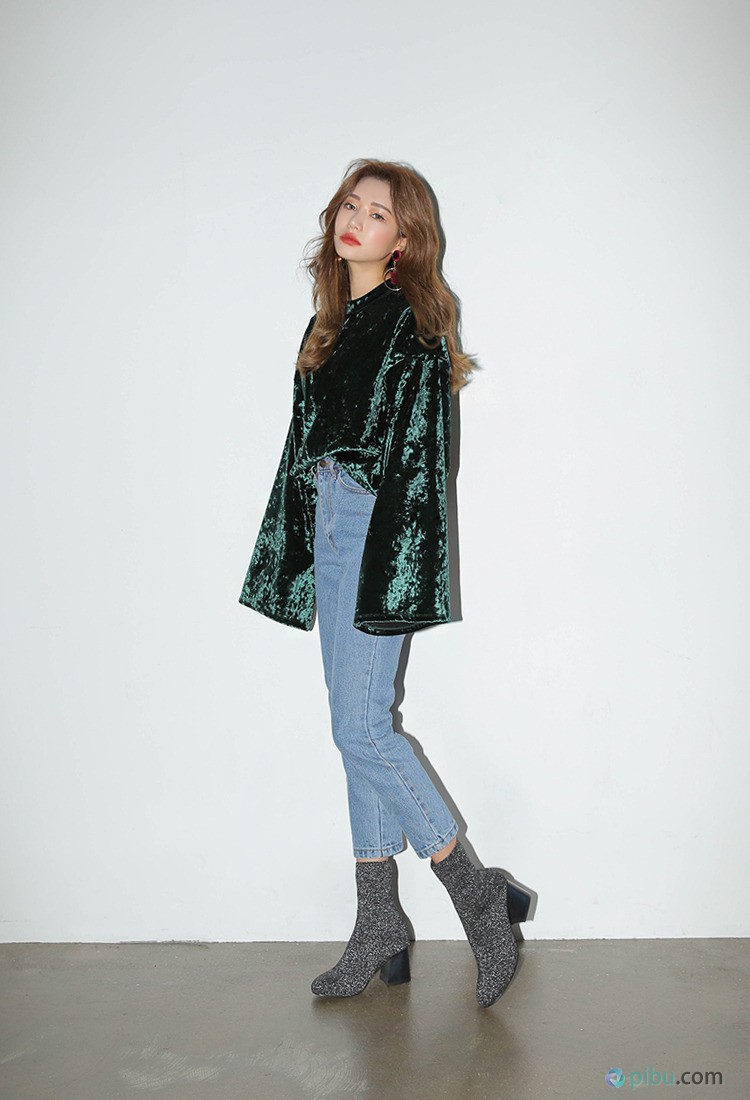As Koreans have swept through China in the past two years, Chinese clothing is also heavily influenced by South Korea. Careful observation of a variety of clothes on a treasure prefix basically can not be separated from the Korean, South Korea, South Korea this keyword. Why Korean dress is so popular, in fact, the main reason is because of the impact of Korean drama, so now the pursuit of the protagonist of the drama is naturally popular, of course, there is also a reason that the Korean people are similar to the Chinese, their clothes are very delicate It is very natural to wear Korean dresses in China. Why can't Chinese clothes compare? First of all, we must start with the fabric. Let's look at a group of Korean clothing photos. From the point of view of the costumes and design styles, it is possible to distinguish Korean clothing. Korean fabric characteristics Because of the variety, fast color renovation, the price is relatively low compared to European fabrics, South Korean fabrics won the favor of many high-end women's enterprises in Shenzhen, Japan, South Korea fabrics account for more than 30% of the fabric used, and the share is still increasing, both places The fabric enterprises are even Shenzhen as a business site. At the 7th Shenzhen Apparel and Apparel Fair, the Korea Fiber Research Institute will specifically lead more fabric companies to Shenzhen to exhibit and observe, and promote the Korean fabric products to Shenzhen garment enterprises in all levels. In recent years, the pace of Korean fabric suppliers entering the Chinese market seems to be faster than that of Japanese companies. Hyosung Co., Ltd., a well-known Korean chemical fiber company, has established a joint venture factory in Zhejiang Jiaxing to produce spandex, and South Korea's Huizhou Shi has also invested heavily in Zigong Sichuan to establish a fiber company. South Korea Shichang Textile Co., Ltd. is a production-oriented enterprise integrating production, development and sales. Industrial Environment of Korean Fabrics As far as general textiles are concerned, China and South Korea are not much different, but South Korea is ahead of China in functional fabrics, such as thermal insulation, waterproofing, and radiation protection. South Korea's fiber industry is in the fifth-largest technology level in the world. In recent years, South Korea has made high-tech fiber, ultra-filament fiber, nano-fiber, smart fiber and other high-functional fibers as the key development direction of the Korean fiber industry. According to Korea's Garment Industry Association, Mr. Takahashi, South Korea is also focusing on cultivating talents in the fiber industry for the continuous development of the fiber industry. For example, in terms of fashion designers, 8900 people are cultivated every year, and there are about 670 talents in the fiber industry each year. Officials of the Korean fiber industry have also made plans for the development of the industry. The goal is to achieve a 55% increase in the production of industrial fibers in 2015, and an increase in the proportion of apparel products to 30%. In order to achieve this goal, they first actively promote the production base of industrialized fibers and the IT of dyeing and processing. In addition, it also promotes localized overseas marketing. "The biggest feature of the fiber industry is that it has a large number of SMEs, so the development of the fiber industry is closely related to the promotion of cooperation in various areas of the fiber industry." The Korea Fiber Association also actively promotes fiber companies and foreign fiber industry Cooperation. The lack of domestic fabric Lagging fabric design has always been a bottleneck restricting the development of the domestic garment industry. According to statistics, China's import and export apparel fabrics are roughly equivalent in value. Among them, 51% of imported apparel fabrics belong to feed processing, and 45% belong to processing. If we look at the quantity alone, domestically produced apparel fabrics can fully meet the needs of domestic consumers, but there is still a big gap between the quality, texture, and pattern design and imported fabrics. In the face of aggressive foreign fabric manufacturers, China's fabric manufacturers have shown insufficient strength due to low quality, low technological content, and lack of innovation in color varieties. The fundamental reason for this embarrassing situation is that many fabric manufacturers have transformed and separated from state-owned enterprises. Business leaders are more willing to undertake sample processing instead of investing more time and money for market research and development. Do not want to take more market risk. In addition, due to the current fabric manufacturers can not be provided according to the requirements of clothing manufacturers or designers of small quantities of fixed weaving and dyeing products, which makes clothing manufacturers and designers are more willing to look to those business models are very flexible imported fabrics. Guangzhou LIDONG Garment Industrial Co., Ltd. , https://www.fengduwear.com




For more content, please follow this site